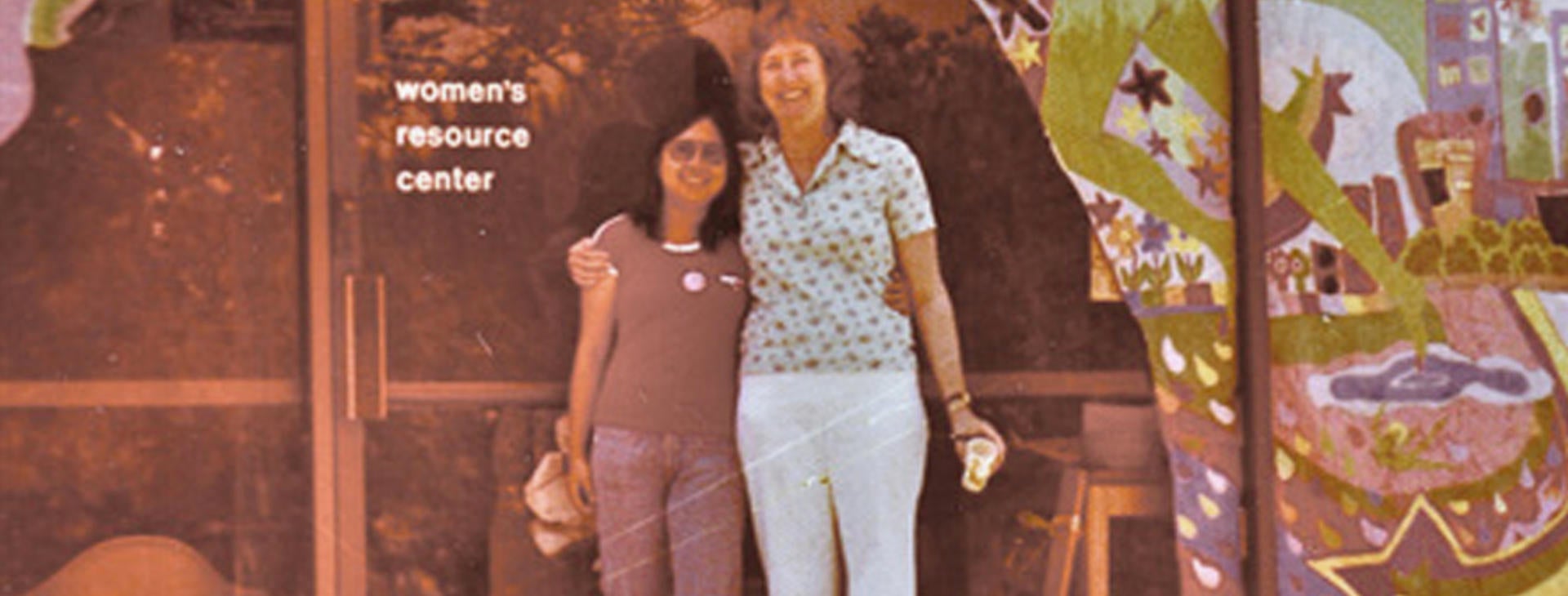Our History
Empowering Students Since 1973
Since the day our doors opened, the WRC has not only supported students, but also forwarded the larger, collective goals of equity, safety and empowerment for all women everywhere. Our timeline tells the story.
-
1973
- The Women's Resource Center (WRC) opens its doors in August 1973, serving as an action-oriented women's space providing referrals, educational programs, speakers and services for women that may not have been provided elsewhere on campus.
- The center collaborates with many campus organizations, other universities and the greater community to address issues including welfare and prison reform, LGBT rights and sexual health, including birth control, family planning, sexual harassment and rape.
-
1974
- Sara Sheehan becomes the first official WRC coordinator.
- The center is moved to the former Commons area behind the HUB.
- The WRC lounge is considered a place of progressive women's politics, a bastion of activism and a location where all women can come together to share poetry, spoken word and feminist readings.
- The center adds self-defense, affirmative-action advocacy and training for women around the "bureaucracy" to its agenda.
- The WRC is instrumental in implementing the first rape crisis center at UCR and pushing the university to offer a women's studies major.
-
1976
- Jane Brown becomes the second WRC coordinator and begins addressing issues of domestic violence, alcoholism, sexuality and LGBT issues. She creates a feminist library, makes great strides for LGBT rights on campus and is involved in the creation of a Title IX Office at UCR.
-
1977
- Two years after its creation by a group of concerned students, the Campus Safety Escort Service moves under the supervision of the WRC.
-
1978
- When a university administrator proposes eliminating the WRC, the campus community responds with petitions, rallies and protests that ultimately save the center.
-
1989
- Barbara Paton Gardner becomes the center’s first director.
- The center focuses much of its efforts on rape prevention and community building.
-
1996
- Dr. Adrienne Sims becomes WRC director.
-
2003
- The WRC changes its name to Gender Education and Resource Services (GEARS).
-
2005
- Students successfully lobby to change the center's name back to the Women's Resource Center.
-
2010
The WRC founded the Leadership Community for Women Club (TLC Club) as part of the Leadership Community for Women initiative.
-
2011
- Dr. Sims initiates UCR’s first institutional membership with the American Association of University Women.
-
2012
- The WRC founds peer mentor program SAVE (Sexual Assault and Violence Education).
-
2013
- The WRC broadens its internship base, adding internships through The Leadership Community for Women Club and SAVE.
- The center launches the Scotty Cubs and Parents support group and creates the student parent assistant position to coordinate family-friendly events.
- The center develops the Resources and Research in Genders Initiative (RReGI), a bridge between the Women’s Resource Center and Department of Women’s Studies that enhances and connects communities and initiatives around gender.
- The center establishes the campus’s first student lactation station so students have a relaxing, secure space they can use at-will to express milk or breastfeed.
-
2014
- Dr. Sims retires after 20 years of service at the WRC.
-
2015
- Felicia Salinas-Moniz becomes WRC director.
- The WRC hosts the first family graduation.
-
2016
- Denise Davis becomes WRC director.
- Romanie Arterberry, student life and development specialist, marks 25 years of service in the WRC.
-
2017
- WRC's first-ever Persist: Women's Political Engagement Conference
-
2018
- Nathaly Martinez leaves the position of WRC Program Coordinator, after three years, to pursue a Masters of Education at Harvard.
-
2019
- The WRC co-sponsored the first-ever "State of Women in the Inland Empire Report" with UCR's Center for Social Innovation and The Women's Foundation of California.
Special thanks to Karla Aguilar for her invaluable research!
Source: Special Collections and University Archives, Tomás Rivera Library
You Belong at UCR
All programs, services, and events offered through Student Affairs are open to everyone, consistent with federal and state law and the University of California’s nondiscrimination policies. Whether you’re seeking support, joining a community, or participating in campus life, every effort is made to ensure your experience is inclusive, respectful, and accessible, regardless of background or identity.
To learn more, visit the UC Nondiscrimination Statement or the Nondiscrimination Policy Statement for University of California Publications Regarding Student-Related Matters.
